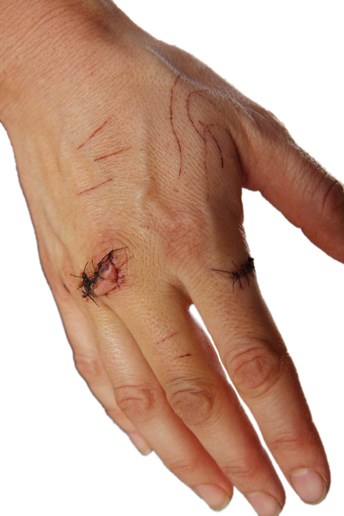
It can be hard to believe that a safe distance is as much about the animal’s welfare as it is about yours, but it’s true. Getting too close, feeding, and touching are all things that can put you and your furry, feathered, or scaled counterpart in grave danger. While Zion National Park is a conscientious partner for visitors, it also remains continuously committed to the protection and preservation of nature and wildlife. Despite their good intentions, some visitors love park animals to death. As wildlife become used to humans and lose their natural fear, the animals become aggressive and may be destroyed. Although they may appear harmless and even curious about you, wildlife do injure visitors every year. Small rodents can and will bite the hand that feeds them, transmitting a variety of diseases. Larger animals, such as deer, have been known to buck or kick suddenly and cause serious injuries.That’s partly why approaching, harassing, or feeding any kind of wildlife, no matter how small or familiar, is illegal in all national parks. We want all visitors to create lasting memories, so be safe and remember that distance always makes the heart grow fonder. How close is too close?While you may be committed to getting the perfect photo, stay at least 100 feet (30 meters) or about three bus lengths away from deer, bighorn sheep, California Condors, and mountain lions. Keep at least 50 feet (15 meters) away from other smaller wildlife like squirrels, birds, and reptiles. Stay safe and never assume you can get away with a close encounter. But, what if I really want the perfect photo?The popularity of selfies and capturing the moment through photographs or video is posing a new threat to wildlife and humans. Trigger-happy tourists have started to provoke animals, and in some instances, alter their behaviors as a result. Quietly watching from a distance can be even more rewarding than getting the perfect shot. Perhaps you even came here to “get away” from a busy lifestyle and technology. So, use your zoom or a telephoto lens, or put your camera down and take a moment to really appreciate what you see. What if I want to get an animal’s attention?Calling, clicking, whistling or making noises of any kind to attract wildlife is illegal. The same applies to any kind of behavior that harasses wildlife or changes their behavior. Animals deserve to enjoy the park without disruption just as you do.If there’s a group of people, is it safer to be near wildlife?Whether it’s just you or 20 people, keep the long distance.As crowds gather (as they often do), wildlife can quickly feel threatened and, in their panic, harm people. This is especially the case as people start to surround the animal(s), even if they are at the proper distance, because the wildlife may feel trapped. If people around you stop maintaining the safe distance, don’t be afraid to speak up and remind your fellow visitors of the safe distance rules. Sometimes, in the moment, anyone could use a gentle reminder that long-distance relationships with wildlife are better for everyone. What if an animal approaches me?Wildlife may not know better, but YOU do. Although it may feel flattering, if any kind of wildlife approaches you, back away and maintain that safe distance. It’s your responsibility and your safety — help us keep wildlife wild.Can I feed the animals?Perhaps you’ve fed animals in petting zoos before, but national parks are different. Help us keep this place and these animals unique by never feeding them.Feeding wildlife is prohibited. Even feeding animals grass and other vegetation from the park or other food you think might be harmless is not allowed. This is for their safety as well as yours. Wildlife will invade food left unattended. Store food in your vehicle’s trunk, out of sight, with the windows completely closed. Make sure to properly dispose of trash, and ensure you clean up all food particles. What if an animal begs for food?Animals can easily pick up scavenging practices, so never feed them. Animals stay healthier when you do not feed them. Once they learn to beg, they can become aggressive, more likely to get injured by vehicles, and become seriously ill. They do not need your food handouts to survive. You can help us curtail this unwanted behavior from animals by putting your food away and moving away from the animal. Ask a ranger for other ways you can help.Ah, but what harm could one person really do when they get too close or toss a piece of food to an animal? I’ve been up close to wildlife before!Some of us might think of ourselves as “animal whisperers” or be really familiar with certain kinds, but consider using your gift to help our national parks be a place where wildlife can be wild. That’s why you and all of our other guests have come to appreciate these special places. Be a role model to others in your family or group and even other visitors by embodying our mission to protect and preserve our wildlife.
|
An official website of the United States government
Here's how you know
Official websites use .gov
A
.gov website belongs to an official government
organization in the United States.
Secure .gov websites use HTTPS
A
lock (
) or https:// means you've safely connected to
the .gov website. Share sensitive information only on official,
secure websites.
